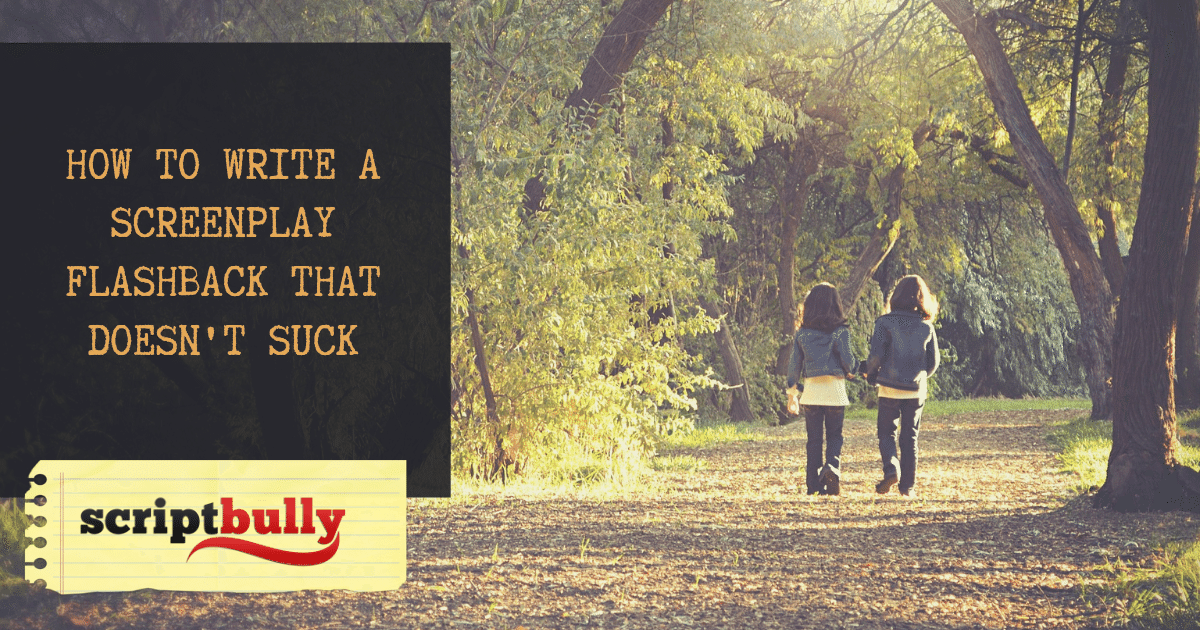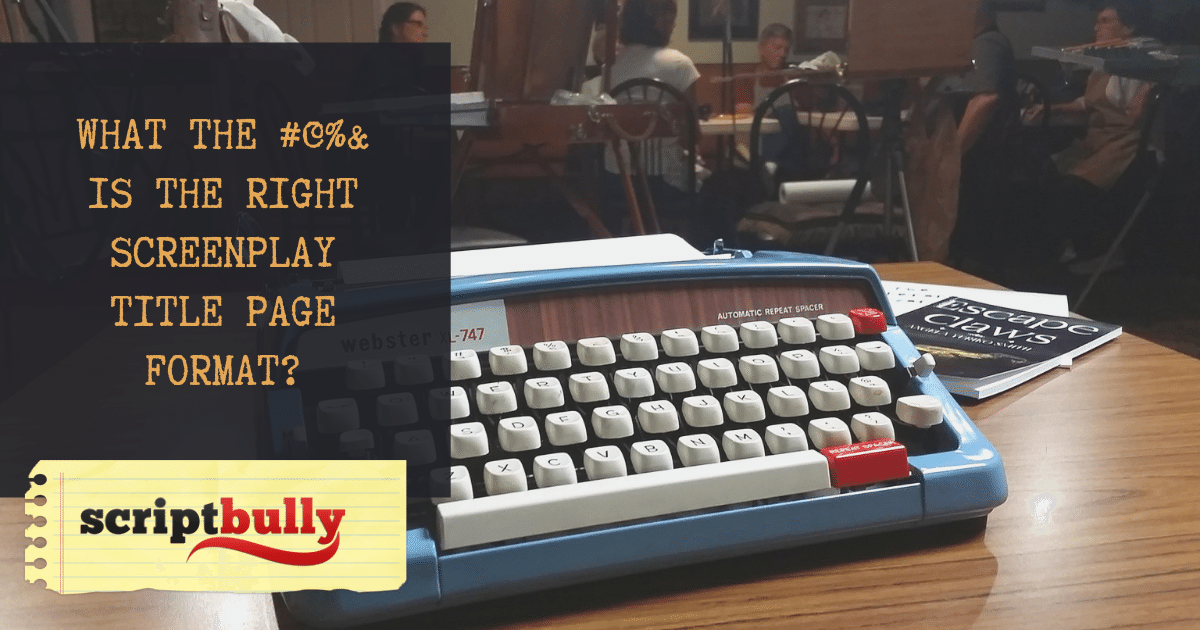Ah…yes. The good-old screenplay flashback. The bane of every screenwriter’s existence.
Many a well-meaning screenplay has careened off the road and ended up in the screenwriting ditch by pulling out a worn-out, super-cheesy flashback sequence. (Especially those who don’t feel confident with screenplay format.)
That’s because flashbacks are, by their nature, inherently “unreal.” But sometimes you need them.
So what do you do?
Well, that’s we cover in this Ask ScriptBully video in which I offer a few strategies for penning a screenplay flashback that doesn’t royally suck.
How to Write a Screenplay Flashback (Text Transcript)
Ask ScriptBully: Flashbacks in a Screenplay – Super Cliche or Super Awesome?
Hey there, everybody it’s Michael from ScriptBully and in this edition of Ask ScriptBully I’m going to be answering a question from Tom in Providence Rhode Island who asks:
I’m thinking of using flashbacks in my screenplay. But I’m worried they’ll look stupid and cliche. Am I being paranoid?
Hey Tom. So your question reminds me of a story. It all started 10 years ago…
Just kidding. No, it’s a good question. And the answer is: you can maybe, sorta, kinda use flashbacks in your screenplay…as long as you do them in a cool way.
How to use them in a cool way? Well, I’m glad you asked.
Non-Sucky Screenwriting Flashback Technique No.1: Hide the Flashback as Long as Possible
So one way to write a flashback is to NOT telegraph it’s a flashback at all. To have the audience ASSUME the scene is in the present timeline, and then suddenly they see something (perhaps a character who was dead, now alive – or a weird jumpin time) that lets them know they are out of linear sequence.
So one way to write a flashback is to NOT telegraph it’s a flashback at all. To have the audience ASSUME the scene is in the present timeline, and then suddenly they see something (perhaps a character who was dead, now alive – or a weird jumpin time) that lets them know they are out of linear sequence.
It’s jarring to an audience – and that’s the point.
The underrated film “Closer,” with Natalie Portman, does this with great effect. (Although having Natalie portman in your movie pretty much helps anything.) The film “Amores Perros” does this. (Great film, by the way.) The Tv show, Orange is the New Black uses this technique well. And Quentin Tarantino does it with great subtlety in Pulp Fiction.
The cool part is once you use it, the audience has no idea where you’re going. (Which is good.)
Non-Sucky Screenwriting Flashback Technique No.2: Go Forward
So this is probably the hipster version of the flashback these days. (The writers of the TV show “Lost” paid their mortgage with this technique.)
This is basically where the narrative is propelled forward to an event that is expected to happen – or could possibly happen – to the characters within the existing timeframe.
It’s very trendy in a lot of the spec scripts I read right now, and when done right…it can be good. But I’m not personally a huge fan. It really takes me out of the narrative.. (I hated it when two of my favorite shows of all my time, Dexter and Weeds, basically used it in their horrible, abysmal series finales.)
This will really depend on genre. I think sci fi, romance, fantasy….they’re okay. But straight drama, comedy, and action – I would stay away.
Non Sucky Screenwriting Flashback Technique No.3: Kill the Flashback Entirely
One question to ask yourself is: do I really need this flashback? Is there a way to express the information that I want to get across without actually writing the flashback.
Perhaps have another character use the backstory as a weapon. Or maybe your main character is simply haunted by an image or an object or symbol or a place.
One of my favorite shows here in the states is “Longmire” – about a hardscrabble sheriff in Wyoming forced to navigate the dangerous political waters between greater Wyoming and the Cheyenne people.
And if you’ve never watched the show, Robert Taylor, plays Longmire is like a combination of John Wayne and Humphrey Bogart but with more upper-body strength. Seriously, the moment this character walks in the room you FEEL the gravitas. You just know…some crazy shit went down with this guy.
And the whole first season they keep eluding to “what happened in Denver.” He doesn’t want to talk about Denver. But people keep bringing it up. Oh…I don’t want to talk about Denver. You can’t go back to Denver.
And the whole first season they’re building up..and you keep wondering what happened… and then they did it. they killed all that suspense. And they did a flashback. and Denver just wasn’t the same.
So, see if you can nix the traditional screenplay flashback, and instead built the tension off-screen. (You might just find a more effective technique and a better story in the long run.)






